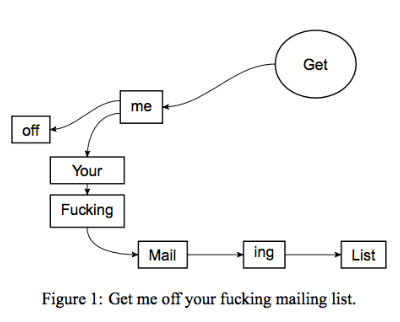Full story at Nature News
UPDATED: Watch Live as the Orion Spacecraft Gets Launched (and then hurtled back at Earth)
UPDATE: Due to a valve issue, today's launch is delayed 24 hours to Friday, Dec. 5th at 7:05am EST.
At 7:05am EST on Thursday December 4, 2014, the Orion spacecraft sitting atop a Delta IV Heavy rocket will be launched from Cape Canaveral. Over the course of 4 hours, it will orbit the Earth twice and reach a peak altitude of 3,609 miles (or 15-times higher than the International Space Station). Finally, it will be aimed back at the Earth and hit the atmosphere at 20,000 mph where its heat shield will have to withstand temperatures around 4,000 degrees.
Orion is the crew module that is slated to send humans back to the Moon, to asteroids, and eventually to Mars. The Dec. 4th launch will test flight controls, re-entry, and radiation levels.
You can watch it live on NASA TV! (via NASA)
A schematic of the Dec. 4th test. Image: NASA
Nature Makes All Publications Free to View, but Only With ReadCube →
Subscribers and 100 media outlets will be able to share read-only PDFs that cannot be printed or downloaded, but can be annotated.
via Nature News
Orbital Systems
Science teachers rejoice! You have a new favorite in-class demo for your solar system unit. Dan Burns explains his creative way to communicate the concept of gravity using a stretched lycra sheet to model space-time. Check out the video here.
Your First Day in Space →
You would have a smile like this.
Manuscript Accepted! Title: "Get me off Your F*cking Mailing List"
Scientists are under a lot of pressure to publish in order to advance their careers and science. Scam journals have popped up in recent years to attempt to prey on this immense stress. These journals often have plausibly legitimate titles like "International Journal of Bioassays" and spam researchers with invitations to publish work for a small fee.
After receiving one of these spam emails, Dr. Peter Vamplew of Federation University Australia’s School of Engineering and Information Technology submitted his groundbreaking research article entitled "Get me off Your Fucking Mailing List."
Screenshot of the game-changing publication's title, authors, affiliations, and abstract.
With data like these, it's no surprise that the manuscript was accepted with only minor revisions.
via @hardsci and Scholarly Open Access. Here's the pdf of the full manuscript. For more information about scam journals and publishers, check our Scholarly Open Access at scholarlyoa.com
The average neighbors' homes.
The Bots Next Door
When you buy "green" appliances, how do you really know you're really saving energy (and money)? One way to figure this out would be to use your monthly energy bill as an indicator. But from month to month, your energy usage patterns change, the weather most certainly changes, you may have gone on vacation one month, etc etc etc...so many variables you can't control.
Fear not young scientist, the Tennessee Valley Authority (TVA) has you covered. From 2009 to 2012, the TVA built 3 identical homes to test this very idea. One home was built to local building requirements and served as a control. The second was retrofitted to have some energy efficient improvements that an average consumer would easily be able to buy, e.g. Energy Star applicances. The third was a "High Performance Home" with solar panels, solar water heating, Energy Star appliances, properly insulated windows, etc.
The TVA didn't stop there. To mimic human activity in each house, every appliance or utility was used at a regular schedule over the course of the experiment. Refrigerator doors opened and closed at preset times (see image right). The TVs turned on to no one watching. The showers sprayed empty tubs. Going one step further, the TVA included "Human Body Emulation Systems" (see image left) which generated ambient heat and humidity similar to what an average human family would output. Containers of water filled the fridges to simulate the humidity and thermal properties of food.
Results showed, unsurprisingly, that the High Performance Home consumed less energy than the Retrofitted home. And both beat the average home built to local laws. More importantly, we see a prime example of how to use controls in a large-scale experiment (I'M LOOKING AT YOU MYTHBUSTERS). via Gizmodo, Popular Science, and the TVA.
Launch of the Antares rocket from NASA Wallops in July 2013. Photo: NASA
The Antares Rocket was Remote Detonated
The recent failure of the Antares rocket shortly after launch was an awful thing to watch. Thankfully nobody was injured, but seeing the loss of the rocket itself and the Cygnus spacecraft carrying supplies and science experiments to the International Space Station was alone very upsetting. A lot of time and hard work of many scientists go in to every launch.
Though the cause of this irregular launch is currently being investigated, National Geographic's Brad Scriber described the explosion and the task of the Range Safety Officers whose job it is to monitor rockets during launch and terminate the flight by remote detonation before they pose serious threats to nearby populated areas.
Why NASA blew up a rocket just after launch. By Brad Scriber.
Screenshot from episode 1.
The Lab: a YouTube Comedy Series
Being a PhD student is weird. We are weird people with super niche struggles. But luckily, we all share in that weirdness together.
A new YouTube comedy series called "The Lab" encapsulates what it is to be a grad student. Its filled with jokes that only actual grad students and PhDs can really get.
Follow them on Twitter @watchTheLab, check them out on Facebook, and most definitely check out their YouTube channel.
Here's episode 1:
Suspicious Carry-on Item: Nobel Prize
Nobel laureate Brian Schmidt on taking his medal through airport security (via Scientific American):
“When I won this, my grandma, who lives in Fargo, North Dakota, wanted to see it. I was coming around so I decided I’d bring my Nobel Prize. You would think that carrying around a Nobel Prize would be uneventful, and it was uneventful, until I tried to leave Fargo with it, and went through the X-ray machine. I could see they were puzzled. It was in my laptop bag. It’s made of gold, so it absorbs all the X-rays—it’s completely black. And they had never seen anything completely black.
“They’re like, ‘Sir, there’s something in your bag.’
I said, ‘Yes, I think it’s this box.’
They said, ‘What’s in the box?’
I said, ‘a large gold medal,’ as one does.
So they opened it up and they said, ‘What’s it made out of?’
I said, ‘gold.’
And they’re like, ‘Uhhhh. Who gave this to you?’
‘The King of Sweden.’
‘Why did he give this to you?’
‘Because I helped discover the expansion rate of the universe was accelerating.’
At which point, they were beginning to lose their sense of humor. I explained to them it was a Nobel Prize, and their main question was, ‘Why were you in Fargo?’”
The Creation Myth as Told by Louis C.K.
Many nerds may drone on about how they believe life could have started on Earth based on this-or-that data, but who knows how it actually happened? Louis C.K. recently took to Twitter to discuss his feelings on the matter:
How "we" may have looked when we came over from Mars.
It's unclear what prompted Mr. C.K. to report his feelings on the origins of humanity, but he has already ruled out one possibility:
Seeing the Invisible
A beautiful short video by the New York Times on Leeuwenhoek and discovering the microbial world for the first time.
Its worth watching for the animation alone.
Man Dives into an Exploding Volcano
Not in the lava directly, but he's pretty damn close. I'm all sweaty from watching.
From youtube: "Sam Cossman and George Kourounis with volcanic pioneers Geoff Mackely and Brad Ambrose become among the first explorers to step foot inside the worlds most dangerous and inaccessible volcano, Marum Crater. More people have visited the moon than the firey bottom of this spectacular and deadly location."
Buzz Aldrin's Space Selfie
"Did you know I took the first space selfie during Gemini 12 mission in 1966? BEST SELFIE EVER" - Buzz Aldrin via Twitter.
Gemini 12 was the last of the Gemini missions where Buzz Aldrin and Jim Lovell "photographed star fields, retrieved a micrometeorite collector and... demonstrated the feasibility of extravehicular activity" (a.k.a. spacewalk), among other tests. Gemini 12 wasn't the first spacewalk, but it's success was credited to Aldrin's extensive underwater neutral buoyancy training, which was new to NASA's missions.
Project Gemini tested the space travel techniques that laid the foundations for the Apollo missions and man's landing and exploration of Earth's moon.
Underwater neutral buoyancy training. Source: www.spacefacts.de
Jim Lovell (left) and Buzz Aldrin (right) on the way to the Titan II GLV rocket. Source: Wikipedia
The Titan II GLV blasting off from Cape Canaveral. Source: www.spacefacts.de
Buzz Aldrin during his extravehicular activity (EVA). Source: Wikipedia
The Gemini crew returning to Earth. Source: www.spacefacts.de
Getting Huge on a Vegetarian Diet
...if you're a dinosaur. Specifically Dreadnoughtus schrani. Scientists unveil their discovery of fossils of an enormous dinosaur in Patagonia in Scientific Reports. Dreadnought, Old English for "fear nothing," would have weighed 65 tons (7 times bigger than T. Rex and bigger than a Boeing 737) and was still growing at the time of death. This discovery is the most complete of the species of its kind.
Who wants to go watch Jurassic Park?
(via Scientific American)
#ScientistProblems
BuzzFeed recently posted a list of #ScientistProblems via Twitter. We've found a few more (below). Some are mildly amusing; some, just true.
aaaaand scene.
Burial Boys of Ebola
by Andrew Lee
This short (5 min) video from The New York Times follows the brave, young men who chose to be the ones to bury the victims of Ebola.
We Humans are Capable of Greatness
by Andrew Lee
This is the first video (out of ten) in the Sagan Series by Reid Gower. They're all of audio recordings of the great scientist Carl Sagan over montages of Earth, space, and life. The first video originally came out in 2011, but watching it every so often is always uplifting.
Damn, someone must be chopping up some onions nearby.
The California Drought in Pictures
Is this why we're fat?
by Andrew Lee
Maybe we'll post more in detail about this one day, but I just wanted to share the recent article about the possible link between early low doses of antibiotics and long-term metabolic effects (in mice). Does this mean anything for humans? Check back for a future article in our Centri-feud section! (via Wired)

























